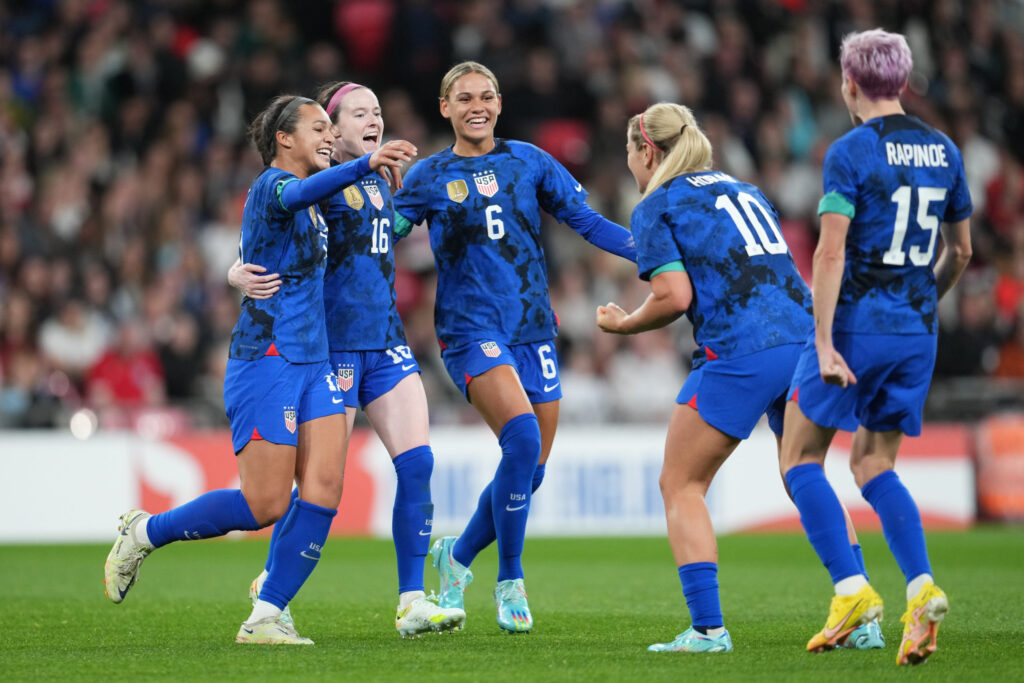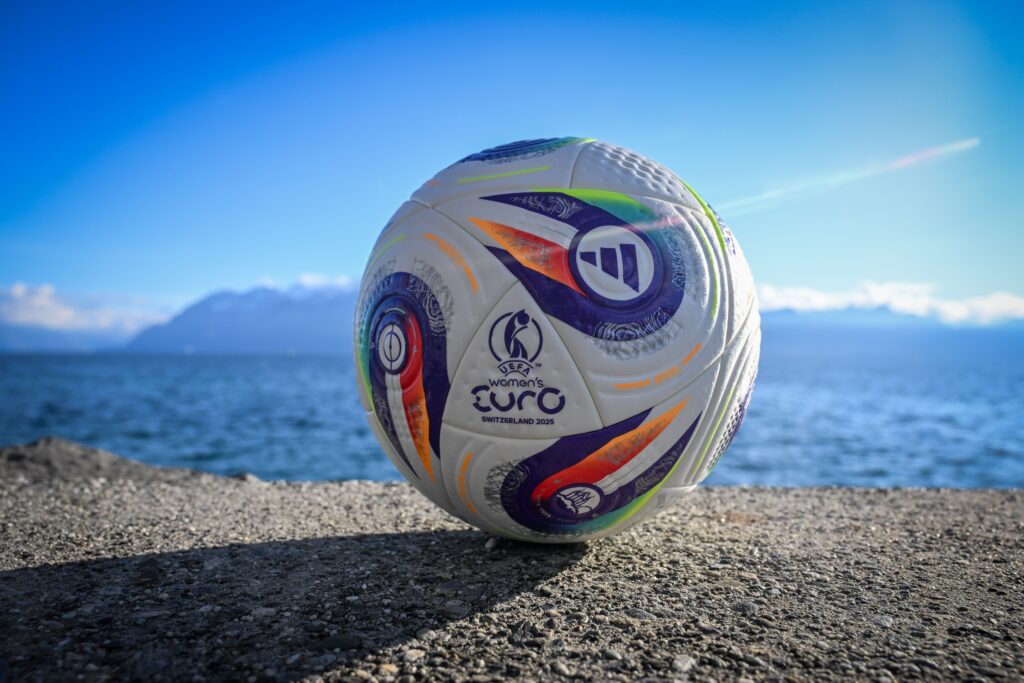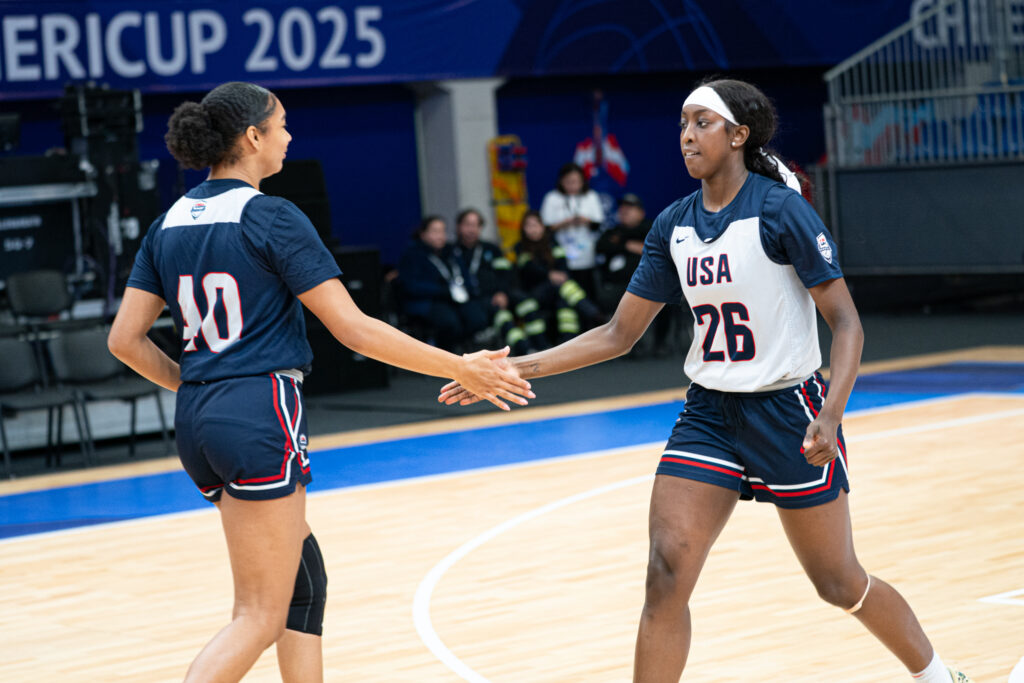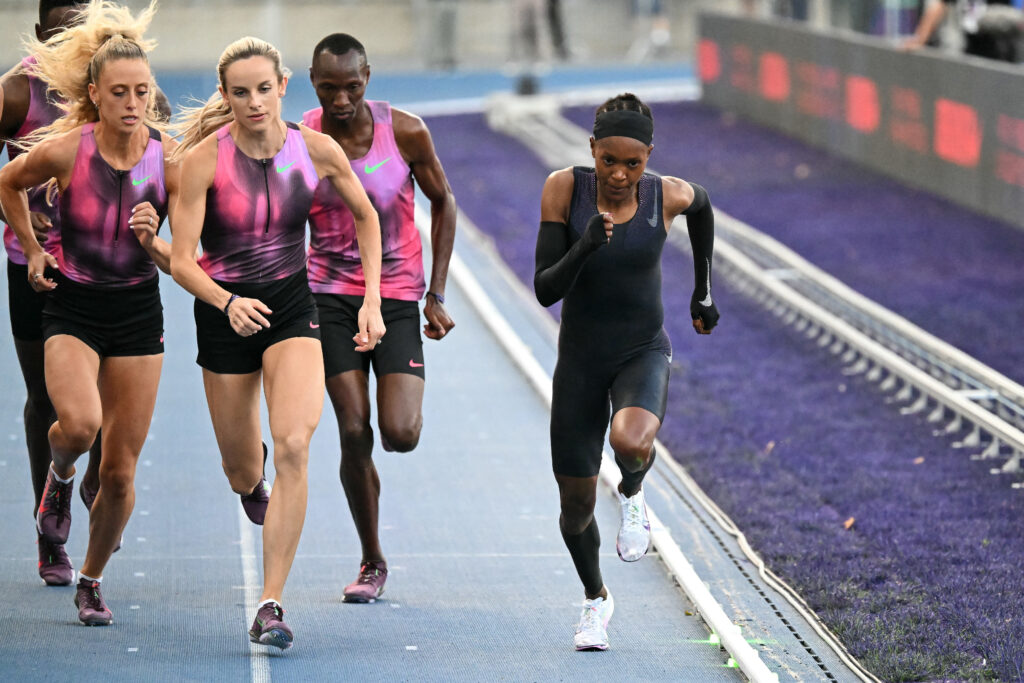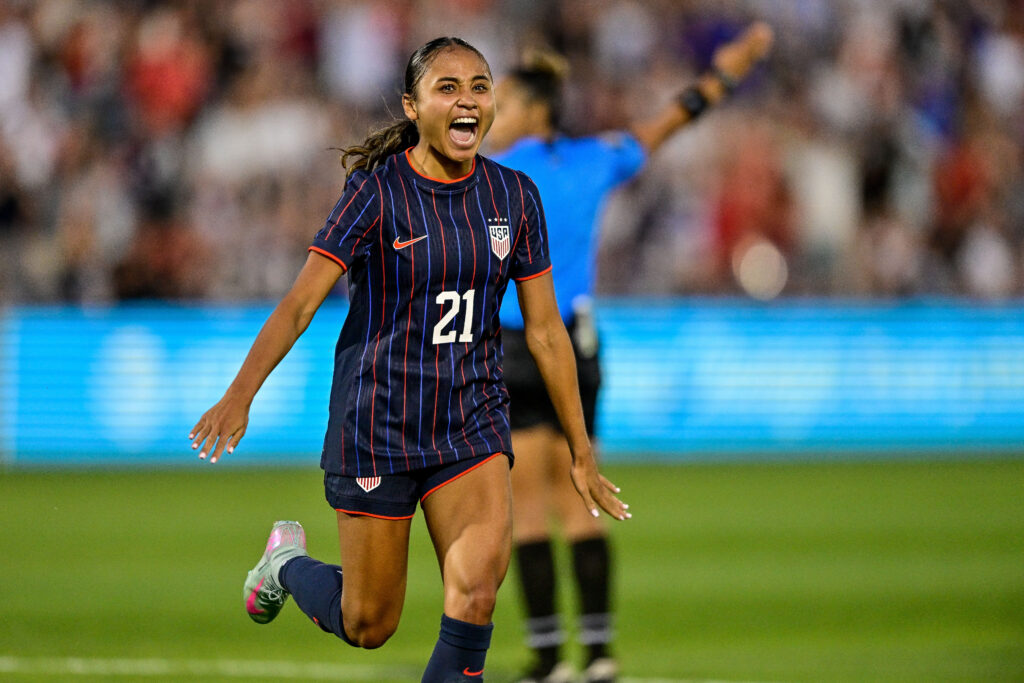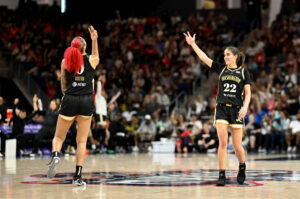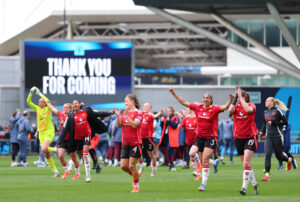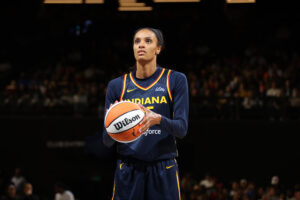One of the longer projects for the U.S. women’s national team in its preparation for the 2023 World Cup comes in the midfield, a group looking to reestablish its cohesion.
In recent months, reports of the team’s progress have come back inconclusive, but the project will continue as the team plays two matches against Germany, the first at 7 p.m. ET Thursday in Florida and the second at 5 p.m. ET Sunday in New Jersey.
The USWNT held just 31% possession against England in October, with 70% passing accuracy. Against a depleted Spain, the team fared better, retaining 48% on a slightly improved 73% passing accuracy.
Still, both matches ended in defeat, the USWNT’s first two-game losing streak in over five years, in part due to waves of opposition pressure caused by turnovers in the middle of the pitch.
With gaps exploited by top teams, the U.S. could try a more consolidated shape, with a double-pivot containing two purely defensive-minded midfielders. The team, though, has been reluctant to make wholesale changes to the midfield personnel or formation, choosing to trust the process with a more settled roster.
“I’ve talked about this, how hard it has been for Rose [Lavelle] and Lindsey [Horan] as midfielders to click with their forwards,” USWNT coach Vlatko Andonovski told the media Wednesday. “Because of injuries, they had to change the players that they played around, whether it was forwards or … fullbacks that were constantly changing, or the personnel was changing. They constantly had to adjust to the players, or players’ abilities or characteristics.”
A final tweak to the attack added to the team’s struggles against England and Spain, as Alex Morgan had to withdraw from availability with a lingering knee injury. Sophia Smith took on a more central role in her absence, a shift Andonovski said cut into chemistry on the right side of the pitch, where midfielder Lavelle feeds to Smith on the forward line.
“Soph and Rose, they started getting a good understanding, they were on the same page and they were doing well, and then again for an unfortunate reason we had to switch Soph out to use her in a different role [in October],” he said.
Andonovski confirmed Smith will be back out on the right wing against Germany, with Morgan presumably slotting back into a starting role at center forward.
Smith told the media Wednesday that she’s becoming more comfortable playing wide despite starting in a central role for Portland this year.
“I think it just depends what players are around me, what team I’m playing with, the system, the style of play,” she said. “But I’m very comfortable in both positions.”
That comfort can be seen on the pitch, especially when she links up with Lavelle.
“We can see already in training that it was almost like [Smith and Lavelle] were missing each other in the last two games,” Andonovski said.
A greater sense of connectivity will be key to combating Germany’s midfield, which is one of the Euros runner-up’s greatest strengths. Defensive midfielder Lena Oberdorf won Young Player of the Tournament this summer and will present yet another challenge to a USWNT midfield that hasn’t looked secure under pressure.
While injuries upset the balance of the roster, the midfield has stylistic issues as well, and the U.S. coaching staff is constantly honing in on specific challenges of adapting to tactical changes.
“We see the new trend in the game, in terms of marking the midfielders or man-to-man marking in that middle zone,” Andonovski said.
Non-zonal marking is more popular outside of the U.S. than in the NWSL, meaning that USWNT players might be more used to choosing passing lanes and don’t always get a chance to practice progressing the ball under that much individual pressure.
“They understand that with the new trends, midfielders are not going to be able to get the ball as much as they have in the past,” Andonovski said, noting that his players are excited for the additional challenge. “And now the thing that we want to do is keep the success rate the same with the lesser opportunities to get on the ball.”
It’s certainly possible to achieve success while seeing less of the ball, but it requires an incredibly slim margin of error. If the USWNT midfield can pull off the high-wire act against Germany, the picture for the 2023 World Cup will become much clearer.
